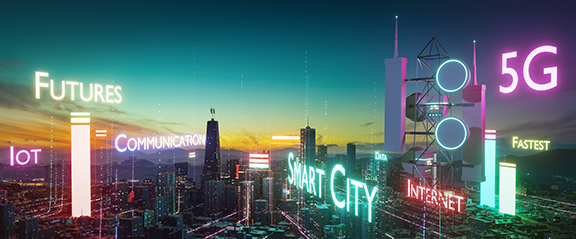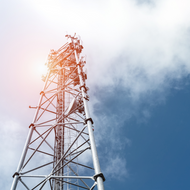Lightning Protection in Telecom: Safeguarding Communication Infrastructure
Published by Kelly Buza on Oct 12th 2023

In today's digital age, reliable telecommunications infrastructure is essential for both personal and business communication. However, this vital infrastructure is vulnerable to various threats, with lightning strikes being a significant concern. Lightning can cause severe damage to telecom equipment, disrupt services, and lead to costly downtime. To mitigate these risks, lightning protection systems are essential components of any modern telecom network. In this article, we will explore the importance of lightning protection in the telecommunications industry and the various measures and technologies employed to safeguard critical communication infrastructure.
The Threat of Lightning Strikes
Lightning strikes pose a considerable threat to telecom infrastructure due to their unpredictable nature and the potential for catastrophic damage. When lightning strikes a structure or a telecommunications tower, it can follow conductive paths, such as cables and wires, into sensitive telecom equipment. This can result in immediate damage to equipment, data loss, and even fires. Additionally, indirect effects like electromagnetic pulses (EMP) generated by lightning can also disrupt telecom systems.
The Importance of Lightning Protection
Lightning protection systems are designed to prevent or minimize damage caused by lightning strikes. In the telecom industry, the importance of these systems cannot be overstated. Here are some key reasons why lightning protection is crucial:
- Network Reliability: Uninterrupted communication is essential for businesses and individuals. Lightning protection systems help ensure that networks remain operational, reducing service downtime and improving reliability.
- Equipment Preservation: Lightning strikes can cause significant damage to expensive telecom equipment, including antennas, transmitters, and data centers. Proper protection measures help extend the lifespan of this equipment and reduce replacement costs.
- Data Security: Telecommunications networks carry vast amounts of sensitive data. A lightning strike-induced surge can lead to data corruption or loss, compromising privacy and data integrity. Lightning protection helps safeguard this critical information.
- Cost Savings: The financial implications of lightning-related damage can be substantial. By investing in lightning protection, telecom companies can save money in the long run by avoiding costly repairs and replacements and downtime.
Lightning Protection Measures in Telecom
To protect telecom infrastructure from lightning strikes, a multi-layered approach is employed. At ALLTEC, we refer to this a the ALLTEC Protection Pyramid. Each level represents a solution utilized to protect facilities from harmful electrical events:
- Tier III, grounding/earthing and bonding;
- Tier II, surge suppression;
- Tier I, lightning protection.

Rather than viewing these tiers as independent, we treat the layers as interlocking components. Only when all three tiers are designed, installed, and maintained as a total system, comprehensive facility protection is achievable.
Tier I: Lightning Rods and Grounding: Lightning rods, also known as air terminals, are strategically placed on tall structures like telecom towers to attract lightning strikes. These rods are connected to grounding systems that safely dissipate the electrical energy into the ground, preventing damage to equipment.
Tier II: Surge Protection Devices (SPDs): SPDs are installed at various points within the telecom network to divert lightning-induced surges away from sensitive equipment. They work by redirecting excess energy safely to the ground, ensuring that the surge does not reach critical infrastructure.
Tier III: Bonding and Shielding: Bonding conductive materials and using shielding techniques help create a path for lightning currents to follow safely away from sensitive areas. This minimizes the risk of electrical arcing or damage to equipment.
Lightning protection is a critical consideration for the telecommunications industry, where reliable and uninterrupted communication services are essential. By implementing the alltec Protection Pyramid, telecom companies can effectively safeguard their critical infrastructure, ensuring network reliability and minimizing downtime.
In a world that relies heavily on communication, lightning protection is not just an option; it's a necessity for maintaining the connected world we depend on.

